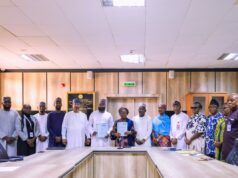Nigeria’s economy is gaining momentum, with the National Bureau of Statistics (NBS) reporting a 4.23% year-on-year GDP growth in the second quarter of 2025, a significant leap from 3.48% in Q2 2024 and 3.13% in Q1 2025.
The figures released recently, highlight the success of President Bola Tinubu’s economic reforms, driven by a rebound in oil production, a resilient non-oil sector, and a recent GDP rebasing exercise using 2019 as the base year.
The NBS report details sectoral gains: agriculture grew by 2.82% (up from 2.60% in Q2 2024), industry surged to 7.45% (from 3.72%), and services recorded 3.94% growth (from 3.83%). The industry sector’s contribution to GDP rose to 17.31% from 16.79% last year. In nominal terms, aggregate GDP reached N100.73 trillion, a 19.23% increase from N84.48 trillion in Q2 2024.
“This latest NBS figure validates the viability of the reforms across sectors under President Tinubu,” said Sunday Dare, Special Adviser to the President on Media and Public Communication, in a statement on X. The rebasing, which updated the GDP base year from 2010 to 2019, expanded economic measurements to include digital, creative, fintech, and informal sectors, significantly boosting nominal output and lowering the public debt-to-GDP ratio to 39.4% in Q1 2025. Nigeria’s total public debt stood at N149.39 trillion as of March 31, 2025, with N78.76 trillion domestic and N70.63 trillion external.
The Hope Alive Initiative, a non-governmental organization, commended the growth as evidence of President Tinubu’s reforms reversing economic decline. “Nigeria is not just recovering, it is rising,” said Ernest Omoarelojie, the group’s Director of Press. He cited additional milestones: external reserves at $42 billion, a six-month inflation decline with single-digit projections by 2026, and a 173% surge in manufactured exports in Q2 2025. Infrastructure projects, including 13 major roads, the Lagos-Calabar Coastal Highway, and the $3.02 billion Port Harcourt–Maiduguri Rail Line, are also driving growth.
Social initiatives are equally impactful. Over N330 billion has been disbursed to 8.1 million households, and N80 billion in education loans have reached 400,000 students. Vice President Kashim Shettima’s Poverty Exit Plan aims to lift 40–50 million Nigerians out of poverty in the next decade, signaling a push toward a diversified, sustainable economy.
As Nigeria targets a $1 trillion economy by 2030 under the Renewed Hope Agenda, these figures underscore a nation on the rise, with reforms paving the way for inclusive growth and global competitiveness.
Discover more from TheTimes Nigeria
Subscribe to get the latest posts sent to your email.










